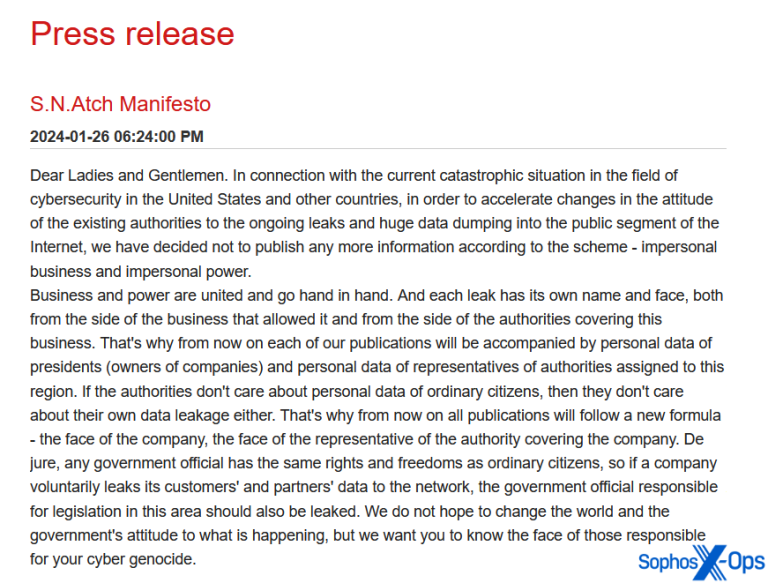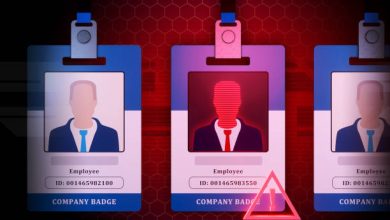Sophos Finds Ransomware Gangs Escalate Attacks with Stolen Data Tactics

Sophos, a global leader of innovative security solutions for defeating cyberattacks, today released a new dark web report, “Turning the Screws: The Pressure Tactics of Ransomware Gangs,” which details how cybercriminals are weaponising stolen data to increase pressure on targets who refuse to pay. This includes sharing the contact details or doxing the family members of targeted CEOs and business owners, as well as threatening to report any information about illegal business activities uncovered in stolen data to the authorities.
Sophos Research Findings
In the report, Sophos X-Ops shares posts found on the dark web that show how ransomware gangs refer to their targets as “irresponsible and negligent,” and in some cases, encourage individual victims whose personal information was stolen to pursue litigation against their employer.
“In December 2023, in the wake of the MGM casino breach, Sophos began taking note of ransomware gangs’ propensity to turn the media into a tool they can use to not only increase pressure on their victims but take control of the narrative and shift the blame. We are also seeing gangs singling out the business leaders they deem ‘responsible’ for the ransomware attack at the companies they target. In one post we found, the attackers published a photo of a business owner with devil horns, along with their social security number. In a different post, the attackers encouraged employees to seek ‘compensation’ from their company, and, in other cases, the attackers threatened to notify customers, partners and competitors about data breaches. These efforts create a lightning rod for blame, increasing the pressure on businesses to pay up and potentially exacerbating the reputational damage from an attack,” said Christopher Budd, Director, Threat Research, Sophos.
Sophos X-Ops also found multiple posts by ransomware attackers detailing their plans to search for information within stolen data that could be used as leverage if companies don’t pay. For example, in one post, the WereWolves ransomware actor notes that any stolen data is subject to “a criminal legal assessment, a commercial assessment and an assessment in terms of insider information for competitors.” In another example, the ransomware group Monti noted that it found an employee at a targeted company searching for child sexual abuse material and threatened to go to the police with the information if the company didn’t pay the ransom.

These posts align with a broader trend of criminals seeking to extort companies with increasingly sensitive data relating to employees, clients or patients, including mental health records, the medical records of children, “information about patients’ sexual problems” and “images of nude patients.” In one ransomware case, the Qiulong ransomware group posted the personal data of a CEO’s daughter, as well as a link to her Instagram profile.
“Ransomware gangs are becoming increasingly invasive and bold about how and what they weaponise. Compounding pressure for companies, they’re not just stealing data and threatening to leak it, but they’re actively analysing it for ways to maximise damage and create new opportunities for extortion. This means that organisations have to not only worry about corporate espionage and loss of trade secrets or illegal activity by employees but also about these issues in conjunction with cyberattacks,” said Budd.
Read the full report “Turning the Screws: The Pressure Tactics of Ransomware Gangs” on Sophos.com.




